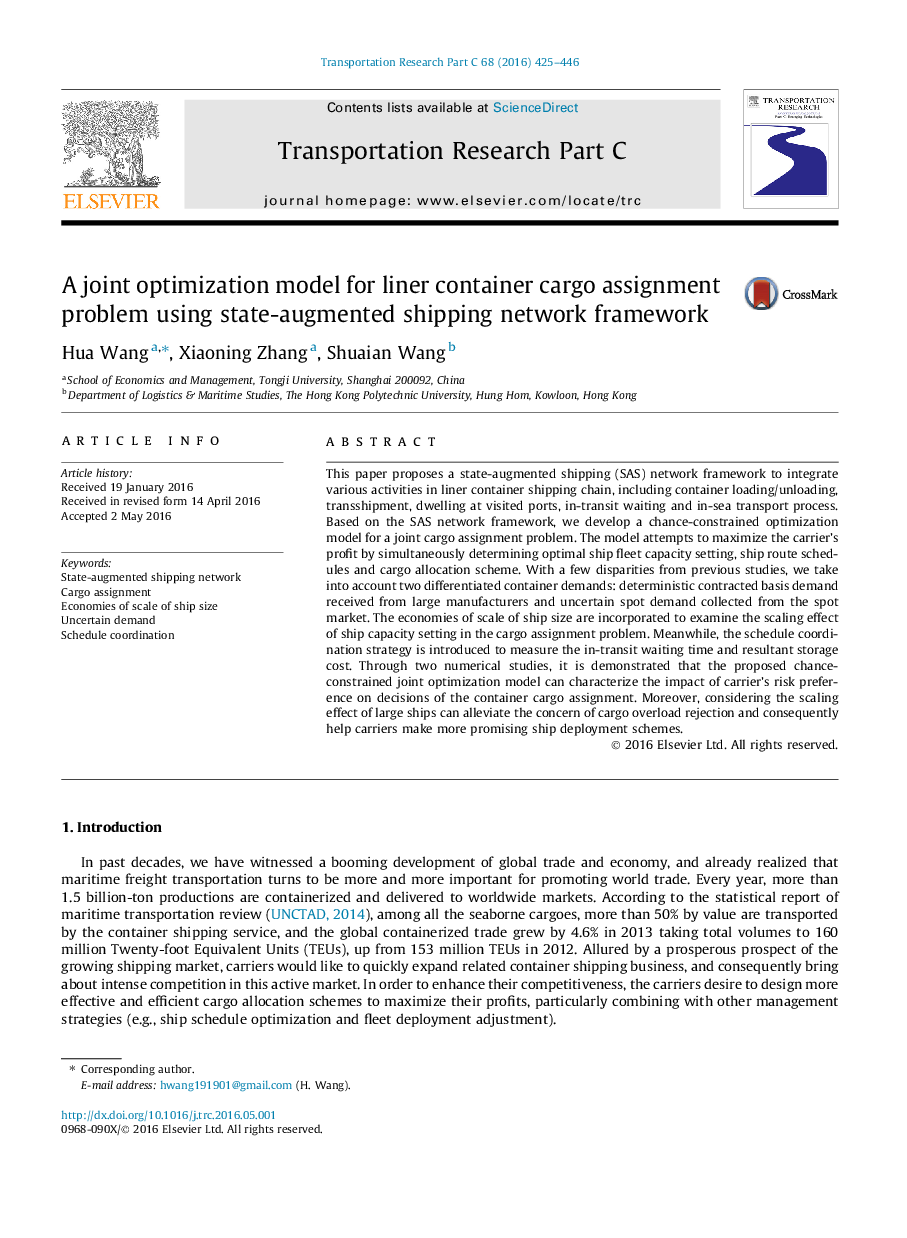| Article ID | Journal | Published Year | Pages | File Type |
|---|---|---|---|---|
| 6936418 | Transportation Research Part C: Emerging Technologies | 2016 | 22 Pages |
Abstract
This paper proposes a state-augmented shipping (SAS) network framework to integrate various activities in liner container shipping chain, including container loading/unloading, transshipment, dwelling at visited ports, in-transit waiting and in-sea transport process. Based on the SAS network framework, we develop a chance-constrained optimization model for a joint cargo assignment problem. The model attempts to maximize the carrier's profit by simultaneously determining optimal ship fleet capacity setting, ship route schedules and cargo allocation scheme. With a few disparities from previous studies, we take into account two differentiated container demands: deterministic contracted basis demand received from large manufacturers and uncertain spot demand collected from the spot market. The economies of scale of ship size are incorporated to examine the scaling effect of ship capacity setting in the cargo assignment problem. Meanwhile, the schedule coordination strategy is introduced to measure the in-transit waiting time and resultant storage cost. Through two numerical studies, it is demonstrated that the proposed chance-constrained joint optimization model can characterize the impact of carrier's risk preference on decisions of the container cargo assignment. Moreover, considering the scaling effect of large ships can alleviate the concern of cargo overload rejection and consequently help carriers make more promising ship deployment schemes.
Related Topics
Physical Sciences and Engineering
Computer Science
Computer Science Applications
Authors
Hua Wang, Xiaoning Zhang, Shuaian Wang,
